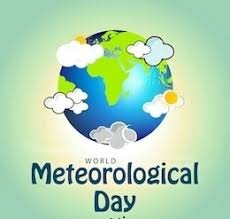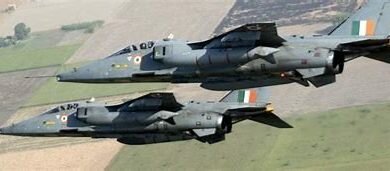World Meteorological Day – India Manoeuvring One of the Best Forecasting Systems in the World

World Meteorological Day – India Manoeuvring One of the Best Forecasting Systems in the World
New Delhi: World Meteorological Day was first observed on March 23, 1950, with the establishment of the World Meteorological Organisation (WMO). Set up as an intergovernmental framework with a union of 193 Member States and Territories, WMO became the specialised and supreme agency of the United Nations for meteorology (weather and climate) and related science.
Every year, the organisation announces a slogan or theme for World Meteorological Day and this time it has announced “the ocean, our climate and weather” as the official theme. The theme has been selected in conjunction with the launch of the “United Nations Decade of Ocean Science for Sustainable Development (2021-2030).”
The vision of World Meteorological Day focuses on building a system where all nations, especially the most vulnerable, are more resilient to the socioeconomic consequences of extreme weather, climate, water and other environmental events; and underpin their sustainable development through the best possible services, whether overland, at sea or in the air.
The beginnings of meteorology in India can be traced to ancient times wherein we have some of the oldest meteorological observatories in the world. The British East India Company established several such stations, for example, those at Calcutta in 1785 and Madras (now Chennai) in 1796 for studying the weather and climate of India. The Asiatic Society of Bengal founded in 1784 at Calcutta, and in 1804 at Bombay (now Mumbai), promoted scientific studies of meteorology in India.
Today, the Indian Meteorological Department has one of the best forecasting systems for predicting tropical cyclones using high resolution advanced mathematical models (including global, regional and cyclone specific models) crossing both the west and east coast of India and associated adverse weather over India.
So much so, that last year WMO had applauded IMD for its prediction of cyclone AMPHAN, deeming the organisation’s forecast and updates on super cyclone as the “best practice.”
It also lauded the IMD’s aid to India’s neighbouring nations with accurate forecasts and preventing further loss of life and property, terming the handling of the cyclone situation as an “excellent lesson.”
IMD’s predictions and updates were sent out to 13 countries to help them prepare for the damage wherein Bangladesh and Singapore were outlined as the countries to benefit most from its predictions.
“The accurate prediction of genesis, track, intensity, landfall point and time, as well as associated adverse weather like storm surge, rainfall wind, by IMD with a lead period of more than three days, has immensely helped in their early response and actions,” WMO secretary-general E. Maneakova had stated in a letter to IMD for its commendable efforts to contain damage during the super Cyclone AMPHAN.
India has stood by the vision of the World Meteorological Organisation to build a safer system for all nations when it comes to operationalizing an effective mechanism against extreme weather, climate, water and other environmental events/calamities with a quick and forward response.
IMD has continuously divulged into new areas of application and service, steadily building upon its infrastructure in its history of 140 years. Simultaneously nurturing the growth of meteorology and atmospheric science in the country wherein today, meteorology in India is poised at the threshold of an exciting future.






